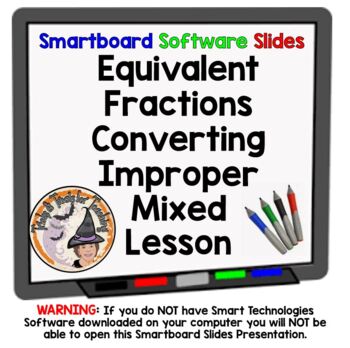Equivalent Fractions Converting Improper Mixed Smartboard Slides Lesson
- NOTEBOOK (SMARTboard) File
Description
FABULOUS Equivalent-Fractions-Smartboard-Slides-Lesson is a GREAT interactive lesson that includes how to convert from an improper fraction to a mixed number and how to convert from a mixed number to an improper fraction. You get 30 slides total! VERY thorough! Lots of great graphics and interactive practice for students. You'll LOVE this and use it year after year to teach converting improper and mixed fractions.
WARNING:
You MUST have SMART Technologies SMART software, and a SMARTBOARD to teach from, to effectively download, open and use this Interactive Smartboard Lesson. Go to https://legacy.smarttech.com/en/products/education-software/smart-learning-suite/download/trial to download a free trial.
Be sure to L@@K at my other 1,285+ TERRIFIC teaching resources!
~ ~ THANK YOU KINDLY ~ ~





